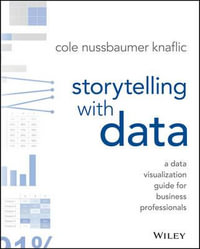
Digital Materials
Continuum Numerical Methods at the Mesoscopic Scale
By: Marc Bernacki, Samuel Forest
Hardcover | 22 November 2024 | Edition Number 1
At a Glance
320 Pages
23.39 x 15.6 x 1.91
Hardcover
RRP $301.35
$248.80
17%OFF
or 4 interest-free payments of $62.20 with
orThis title is not currently in stock at the Booktopia Warehouse and needs to be ordered from our supplier.
Digital materials are integral to the modern design methods for industrial components and structures, allowing mechanical properties to be predicted from a description of the microstructure and behavior laws of the constituent parts.
This book examines a wide range of material properties, from transport phenomena to the mechanics of materials and microstructure changes in physical metallurgy. The fundamental mechanisms of deformation, annealing and damage to materials involve complex atomic processes; these have been explored and studied by numerical simulations, such as molecular dynamics.
In contrast to this minutely detailed approach, Digital Materials explores how these mechanisms can instead be integrated into an approach that considers the continuum of the physics and mechanics of materials at the mesoscopic scale. The book thus focuses on the mechanics of continuous media and the continuum thermodynamics of irreversible processes. The models displayed take the myriad properties of different materials into account, in particular their polycrystalline and/or composite natures; this becomes an intermediate step toward establishing effective laws for engineers in the processes of structure calculation and manufacturing.
Preface ix
Marc BERNACKI and Samuel FOREST
Chapter 1 Dislocation-based Mechanics: The Various Contributions of Dislocation Dynamics Simulations 1
Sylvain QUEYREAU
1.1. Introduction 1
1.2. Overview of discrete dislocation dynamics 2
1.2.1. Initial configurations and periodic boundary conditions 4
1.2.2. Mobility functions 5
1.2.3. Forces on dislocations 7
1.2.4. Topological changes 11
1.2.5. Boundary conditions 12
1.3. Mesoscale plasticity 15
1.3.1. Forest interactions 17
1.3.2. Statistical investigations of dislocation mechanisms 23
1.3.3. Lattice friction 29
1.3.4. Combination of multiple strengthening mechanisms 32
1.3.5. Toward polycrystalline plasticity 33
1.3.6. Cyclic deformations 40
1.4. Conclusion and future work 43
1.5. Acknowledgments 44
1.6. References 44
Chapter 2 Statistical Approach to the Representative Volume Element Size of Random Composites 55
Dominique JEULIN and Samuel FOREST
2.1. Introduction 55
2.2. Elements of numerical homogenization of heterogeneous media 56
2.2.1. Examples of physical properties of heterogeneous media 56
2.2.2. Change of scale in heterogeneous media 57
2.2.3. Principle of calculation of apparent properties 58
2.2.4. Homogenization of random media by numerical simulations 63
2.3. Statistical definition of the RVE 64
2.3.1. Variance of estimation and integral range 65
2.3.2. Definition of the statistical RVE of apparent properties 67
2.3.3. Practical determination of the size of the RVE 69
2.3.4. Scaling of the bias, or systematic error 70
2.3.5. Determination of the size of the RVE in the nonlinear case 72
2.3.6. Remarks on the reduction of variance 73
2.4. Examples of application 73
2.4.1. Linear elastic properties and thermal conductivity 74
2.4.2. Elastic and viscoelastic properties of nanocomposites 89
2.4.3. Optical properties of nanocomposites 90
2.4.4. Fluid flow and permeability 94
2.4.5. Acoustic properties and wave propagation in fibrous media 95
2.4.6. Nonlinear properties 97
2.5. Conclusion 104
2.6. References 105
Chapter 3 Analytical Micromechanical Methods for Elasto-Viscoplastic Composites and Polycrystals 113
Stephane BERBENNI and Samuel FOREST
3.1. Introduction 113
3.2. Translated field method 116
3.2.1. Field equations and integral equation 116
3.2.2. TF-based method: theoretical foundations 118
3.2.3. TF method for elasto-viscoplastic two-phase composite materials 119
3.2.4. TF method for elasto-viscoplastic polycrystals using the SC scheme 125
3.3. The β-model dynasty for multiphase elastoviscoplastic polycrystals 127
3.4. Applications of the analytical micromechanical methods 131
3.4.1. Applications of the TF method to composites and polycrystals 131
3.4.2. Applications of β-models to elastoviscoplastic polycrystals at finite deformations 141
3.5. Concluding remarks 147
3.6. References 148
Chapter 4 Vertex and Front-Tracking Methods for the Modeling of Microstructure Evolution at the Solid State 155
Marc BERNACKI
4.1. Introduction 155
4.2. Vertex frameworks 156
4.3. From Vertex to front-tracking then to enriched Vertex frameworks 160
4.4. Enrichment of the Vertex approach 163
4.5. Other front-tracking frameworks for the modeling of microstructure evolution 169
4.6. Conclusion 173
4.7. References 173
Chapter 5 Phase Field: Theory, Numerical Implementation and Applications 177
Ingo STEINBACH and Oleg SHCHYGLO
5.1. Introduction 177
5.2. The soliton solution of a propagating wave front 179
5.3. Thermodynamically consistent derivation of the phase-field equations 183
5.4. The multi-phase fields approach 184
5.5. Multi-component alloy transformation 187
5.6. Multi-phase field with elasticity 191
5.7. Numerical treatment and applications 192
5.8. Examples 193
5.8.1. Martensitic transformation 193
5.8.2. Recrystallization and coarsening 194
5.8.3. Multicomponent solidification 198
5.9. References 199
Chapter 6 Level-Set Method for the Modeling of Microstructure Evolution 203
Marc BERNACKI
6.1. Introduction 203
6.2. Kinetics equations of microstructure evolution at the mesoscopic scale 205
6.3. Level-set function, description of polycrystal and meshing adaptation 208
6.4. Isotropic framework for LS modeling of ReX and GG 213
6.5. Anisotropy of GB properties and CDRX modeling 218
6.5.1. LS formulations in context of anisotropic GB properties 218
6.5.2. CDRX modeling 225
6.6. Static/evolutive SPPs 228
6.7. Modeling of diffusive solid-state phase transformation 235
6.8. Solute drag aspect 243
6.9. Conclusion 246
6.10. References 248
Chapter 7 Resolution Methods for Digital Materials – Recent Developments of Cellular Automaton Method 261
Lukasz MADEJ and Mateusz SITKO
7.1. Introduction 261
7.2. Cellular automaton and applications 262
7.3. CA front tracking model within the static recrystallization case study 268
7.4. Calculation times and perspectives 281
7.5. References 284
List of Authors 291
Index 293
ISBN: 9781789451979
ISBN-10: 1789451973
Published: 22nd November 2024
Format: Hardcover
Language: English
Number of Pages: 320
Audience: Professional and Scholarly
Publisher: John Wiley & Sons Inc (US)
Edition Number: 1
Dimensions (cm): 23.39 x 15.6 x 1.91
Weight (kg): 0.61
Shipping
| Standard Shipping | Express Shipping | |
|---|---|---|
| Metro postcodes: | $9.99 | $14.95 |
| Regional postcodes: | $9.99 | $14.95 |
| Rural postcodes: | $9.99 | $14.95 |
How to return your order
At Booktopia, we offer hassle-free returns in accordance with our returns policy. If you wish to return an item, please get in touch with Booktopia Customer Care.
Additional postage charges may be applicable.
Defective items
If there is a problem with any of the items received for your order then the Booktopia Customer Care team is ready to assist you.
For more info please visit our Help Centre.























